The era of Digital Marketing has been started with an IBM computer in the year 1981 and later in 1990, the first search engine Archie has come into existence. Further, many new changes have been taken place in this industry by Yahoo, Google, MSN, WordPress, Facebook, YouTube, Whatsapp, Snapchat, etc.

Digital marketing is an evolution with many great developments and upgrades. For the past few years, the usage of the internet, mobile phones, computers, laptops, etc has been increased tremendously. Due to this the companies and industries are investing more in Digital Marketing than Traditional Marketing. Here are the statistics of digital marketing and traditional advertising growth of the last 3 years.

By 2021, Companies will spend 75% of the total budget on Digital Marketing over Traditional Advertising.
Source: Salesforce
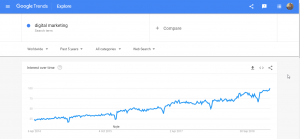
Source: Google Trends
10 Digital Marketing Trends
1. Voice Search & Smart Speakers
Voice search is a technology where users can perform a search by talking to the device. The devices are desktop/ laptop, smartphone and voice assistants/ devices. The google voice search is growing tremendously for the past few years with all age groups.
Top Voice Search Devices
- Google Home/ Assistant and Android Phones/ Devices
- Amazon Echo/Alexa
- Siri/iPhone
- Microsoft Cortana
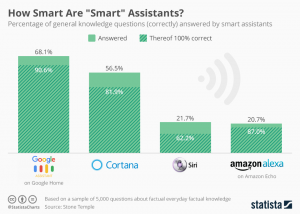
Source: Statista
Usage of Voice Search
- By 2020 50% of the searches will be through voice. (Source: campaignlive)
(Image Source: econsultancy)
- Around 20% of voice searches are triggered with 25 words like “How”, “What”, “Best” etc. (Source: SEO Clarity)

Full Image: SEO Clarity
- 65% of 25-49 year old speak to their voice-enabled devices at least once per day. (Source: PWC)
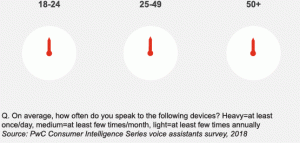
- 51% of those who shop via voice use it to research products, 22% use it to make a purchase, 17% reorder the items. (Source: Narvar)
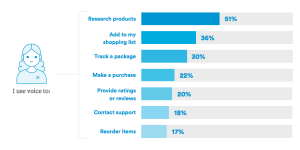
- Some experts predicted that 30% of the searches will take place without a screen by 2020 (Source: Gartner)
- 60% of people use voice search when at home (Source: Stone Temple)
- 57.8% of people use voice search on their smartphones (Source: Stone Temple)
- Voice search queries are usually longer than text searches and characterized by a question—typically three to five keywords long and starting with who, what, when, where, why, and how (Source: Campaignlive)
- Out of the 3.5 billion searches performed on Google every day, almost a third of those are voice searches (Source: The Digital)
- Globally, smart speaker shipments grew nearly 200 percent YOY in Q3 2018. Amazon shipped the most devices, with Google close behind. Consumers are recognizing the value obtained from the voice’s user-friendly interactions (Source: Strategyanalytics)
- Voice search queries typically fall into four categories—30 percent general information, 27 percent personal assistant, 22 percent local information, and 21 percent fun and entertainment (Source: Search Engine Land)
2. Artificial Intelligence & Machine Learning
Artificial Intelligence is a method of understanding customer data and predict the next move and improve the customer journey. It helps marketers to have a clear picture of the target audience.
These insights help marketers to boost their campaigns and increase the ROI. This also helps to optimize and automate customer service.
Applications of Artificial Intelligence in Digital Marketing
- Chatbots: The Chatbots help in automating the responses to the prospects by providing the reference FAQs, product/ service pages they are looking for. The major advantages are – serves 24*7, immediate response, handle any number of customers at a time etc.


- https://blog.adext.com/applications-artificial-intelligence-ai-digital-marketing/
- https://www.smartinsights.com/tag/artificial-intelligence-ai-for-marketing
- Digital Advertising: Google, Facebook, Instagram, and other platforms are using machine learning and artificial intelligence to find people who can do the desired action of the advertiser. To achieve this they understand the demographics, interests etc.
- Searches: To get good accuracy and better results Google is using its machine learning algorithm, rank brain. It understands user behaviour using artificial intelligence and provides the best results based on the user’s language and context.
- User Experience: The intelligent AI algorithms understand the user data like demographics, location, device, interaction on the website etc, based on these, websites are getting customized.
- Email Marketing: The AI is helping to find out the user performance and behaviour of the email and based on that the email marketing campaigns are being personalized. Machine learning analyzes the best time, day of the week, recommended frequency etc to send the emails.
3. Programmatic Advertising
Programmatic advertising means using the software to buy digital ads rather than traditional RFP’s, human negotiations and purchase orders. It automates buying the ads so you can target more specific ads. Real-time bidding and auctions.
The Programmatic ads send specific messages and creatives to the right person at the right time at the right context using the customer insights. Here are the top programmatic advertisement tools used all over the world:
- Rubicon Project
- Ad Roll
- Double Click
- Adobe Marketing Cloud
- AdReady
- Choozle
- Outbrain
4. Augmented and Virtual Reality Marketing
Augmented reality ads are one of the major applications that are now used by some marketers. It’s a way to bring static or unreal environments into a more realistic experience, something that would integrate the “offer” with the “reality” of the buyer.
Michael Kors is a successful example of augmented reality ads. They created an ad on Facebook asking their users to try and purchase their sunglasses.
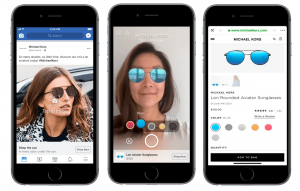
The AR Ads creates a certain emotional connection with the customers. These are very interactive, eye-catching and lifelike. These help marketers to promote & sell the products and services with the virtual try-on.

AR Hyper-local advertising – Unlike traditional hyperlocal ads, these ads tell the consumers about the establishment of the cafes and outlets. These ads are immersive as it shows the objects on the screen. These Ads are extremely useful to the business owners to attract more customers.
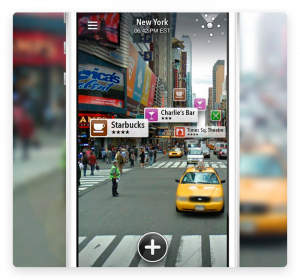
5. Personalized Video Marketing
Personalized video is a video that is customized and relevant to the audience. There are many ways to personalize videos to reach users, companies, etc. The personalized video can be a greeting with the customer name, the slide of pictures, a video of the user.

Personalized video tools:
- https://rocketium.com/is/automated-personalized-video-maker-for-business-outreach-sales-and-marketing
- https://www.vidyard.com/marketing/personalized-video/
- https://sezion.com/
- https://www.idomoo.com/
This is how much consumer love videos:
- More than 500 Million Hours of video are watched on YouTube everyday.
- 82% of Twitter users watch video content.
- Almost 50% of internet users watch videos related to products or services before visiting a store.
6. Visual Search
The visual search is complex than the text search, as the image itself a query here. With the machine learning and artificial intelligence, the search engines are getting better by understanding the components and objects on the image and show the relevant results. For example, you have uploaded a water bottle image, it shows the relevant results of the water bottles.
Along with the voice search, visual search is also growing tremendously. This technology is being used by the users and Google, Pinterest, Amazon, and Bing have made significant growth in this.
Users engagement with the visual search:
Pinterest visual search technology (Pinterest lens) has shared some interesting statistics on the most popular forms of visual search based on the categories and the searches in it.

- Images are returned for 19% of search queries on Google
- There are over 600 million visual searches on Pinterest each month. Image-based Pinterest Ads have an 8.5% conversion rate, and Pinterest is projected to clear $1 billion a year in ad revenue by 2020
- The image recognition market is expected to grow to $25.65 billion by 2019
- By 2021, early adopter brands which redesign their websites to support visual and voice search will increase digital commerce revenue by 30%.
7. Omnichannel Marketing
Consumers are now more sophisticated than ever and find their information through many channels. Initially, multichannel marketing was introduced to allow prospects to communicate with businesses through various channels.
For instance, prospects can be introduced to your business through Twitter, Facebook ads, or stopping into your brick and mortar store. Email subscribers can communicate through email and website visitors can communicate through chat or comments.
But even though multichannel marketing was a step up from single-channel marketing, it didn’t solve consumers’ problems.
That’s why omnichannel marketing provides a better experience for your prospects because it provides a seamless and consistent communication process to prospects and customers across all channels.
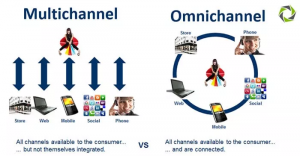
Video Marketing & Live Videos – Watching has more impact than reading and listening and it connects to the users easily. YouTube is the second largest search engine after Google. This has gained a huge audience in the past few years and people are spending a lot of time on this. So, marketing here is a great way.
8. AMP and PWA
AMP: Accelerated Mobile Pages are scripts developed on the open source platforms to help websites to load the content as fast as possible on the mobile devices. These are being used by blogs, websites, eCommerce sites to appear on the mobile search results.
PWA: Progressive Web Apps are web apps or a web page which provides a similar look and feel like an application. PWA helps the websites to revisit their users by push notifications, periodic background syncs, and rich offline experiences.
Using AMP and PWA, the high page loading and waiting can be decreased. Users wait up to 5 seconds on desktop but on the mobile users close the tab if it crosses 3 seconds.

PWA and AMP can be simultaneously used for fast initiation and equally fast journey. AMP loads the webpage even before we bat an eye and loads the content without any delay. By combining PWA, by clicking another link on AMP it provides immediate results.
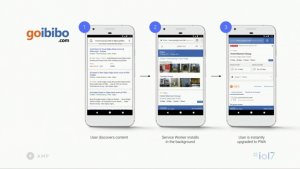
AMP vs PWA
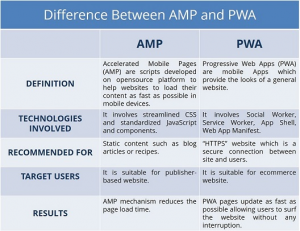
9. Micro-Moments
Google calls the moment when a user searches to find information to go to a place, the thing they want to do or they want to buy, to learn about something. These are intent rich moments and the decisions are made.
The moments like ‘I want to know’, ‘I want to do’, ‘I want to go’, ‘I want to buy’ are used millions of times every day by the users. At this time the consumer’s expectations are higher than usual. The devices trained us to expect the exact results immediately.
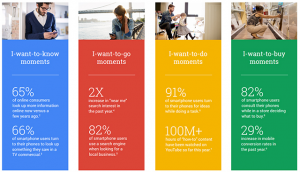
We want things right, and we want things right away
Findings from some recent searches:
- Of leisure travelers who are smartphone users, 69% search for travel ideas during spare moments, like when they’re standing in line or waiting for the subway. Nearly half of those travelers go on to book their choices through an entirely separate channel.
- Of smartphone users, 91% look up information on their smartphones while in the middle of a task.
- Of smartphone users, 82% consult their phones while they’re standing in a store deciding which product to buy. One in 10 ends up buying a different product than they had planned.
- Of online consumers, 69% agree that the quality, timing, or relevance of a company’s message influences their perception of a brand.
10. AMP Stories
The Google AMP helps the websites to create visual stories like Instagram and Facebook stories, designed for mobile websites. AMP stories give a wonderful full screen experience with fast loading. The AMP story format is free and available open source for all the websites. It can be shared or embedded all over the web.
The AMP stories help the content publishing sites with a mobile-friendly format for showcasing the information and news in a visually rich and tap through stories. AMP stories give the opportunity to the publishers and advertisers to reach out to various audiences on the web. These AMP stories are placed in the search results.
AMP Stories on the web

Monetization on AMP Stories
Usually, the story ads are full screen and single page ads that appear inside the AMP Stories. The advertisers/ publishers invite users to a web page, amp page and mobile application. The story ad has a rich, flexible canvas and it allows images, videos, GIFs, animations and a combination of these items. These ads can be executed from google ad manager, google dv360 soon.
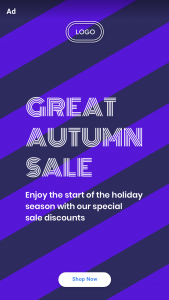
AMP templates: https://amp.dev/documentation/templates/index.html
Start Building your AMP Stories: https://amp.dev/documentation/guides-and-tutorials/start/visual_story/
Bonus
11. Web Push Notifications
Web Push Notifications are the message sent to a device (mobile/desktop) by an app or website. These notifications can be delivered even if the user is not on the website. This is a brand new marketing channel to re-engage visitors without knowing their email or other contact details.
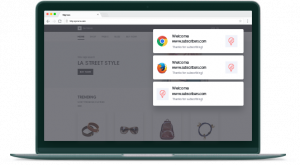

Constant engagement with our customers:
These notifications allow us to keep in touch with our users in a non-intrusive way by providing timely messages and helpful and relevant information like rewards special offers. They also provide a great way of getting users to engage in new promotions or features.
Improve conversion rates:
With these notifications, we can create a sense of urgency. With mobile notifications, we can trigger immediate purchases. We send our users informative messages and thus letting them know about special discounts or limited-time offers on our website.
Improve brand recognition:
These push notifications offer strong recognition by allowing us to use logos in messages. Users are more likely to remember timely push notifications, increasing the essential value to our brand.
Re-engage/retain users:
Many mobile apps have a lot of potential users who have downloaded the app but don’t use it. Push notifications are a good way to turn these inactive users into active users.
Track User metrics
Another benefit of push notifications is that they help to track user behavior. Push notifications offer complex analytics with data on delivery receipts, open rates, open times, and engagement. With push notifications, we can get valuable insights into user behavior including interaction times and click-through rates to see which messages are more likely to be opened. Based on user behavior data, we can launch campaigns that connect better with users.
Few Tools we can use to enable the Push Notifications
